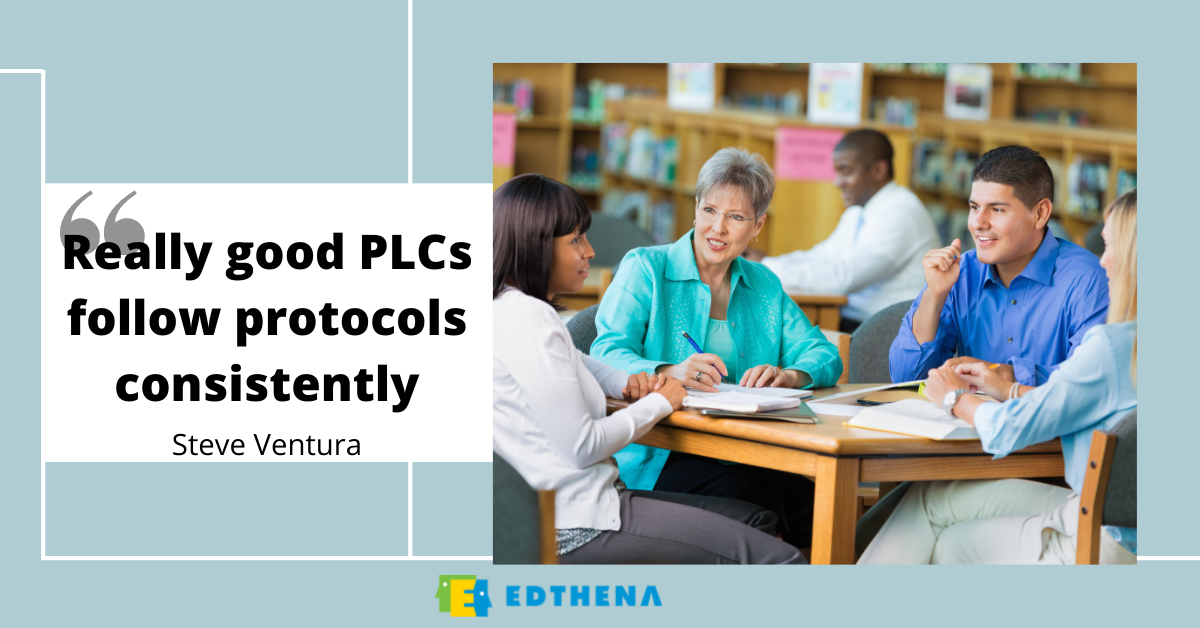PLC Best Practices: Quick Hits, from Protocols to Determining Impact

An effective way for teachers to share ideas and feedback about classroom instruction is through a professional learning community (PLC).
Steve Ventura, author of “Engaged Instruction: Thriving Classrooms in the Age of Common Core,” talked with Edthena founder Adam Geller about key PLC best practices that support teacher improvement and stronger instructional quality.
A former teacher, school leader, and superintendent, Steve outlined what school leaders, such as PD directors or principals, should consider when designing or leading PLCs.
Watch the full conversation below, or read the quick hits of Steve Ventura’s PLC best practices.
PLC best practices help teachers improve more in their classroom
Steve acknowledged that PLCs can vary in their effectiveness, especially when those leading the teacher collaboration time don’t start with key building blocks.
A group of teachers on the same grade team simply looking at student data doesn’t mean those teachers will walk away with concrete instructional next steps.
Here are some PLC best practices to consider for more effective PLC time, according to Steve Ventura.
Teachers should learn new knowledge
At the end of [a PLC] meeting, that team should have new knowledge about teaching and learning. We should be sensitively challenging current thinking and practice.
If teachers are meeting in a PLC to exchange feedback and ideas about classroom teaching, they should leave with research-based instructional strategies.
Make sure teachers have a way to share with each other evidence on what is working in their instruction.
Teachers should follow a protocol
The term PLC has been watered down so much the last 10 or 15 years. … Really good PLCs follow protocols consistently.
Perhaps the PLC protocols could involve steps for analyzing student data, including classroom actions for teachers to take.
Or, teachers can follow a Plan-Do-Study-Act cycle and talk about the self-reflection protocol with their content area department.
Teachers should have a way to determine their impact
A pre- and post assessment, that’s the best way teacher can actually assess their instructional impact. That’s really good evidence to determine, ‘Am I making a difference?’
School administrators designing PLCs should also consider how teachers will know if the learning and strategies that come from PLC time are actually making a difference on student outcomes.
Having a way for teachers to monitor progress in their classroom teaching is one of the key PLC best practices.
Designing effective PLCs leads to teachers getting the most from their professional development and collaboration time. Remember these PLC best practices as you plan for ways teachers can efficiently improve.
Want more insights from our conversations with Steve Ventura? Read what he said works, and doesn’t work, for school administrators supporting teachers.


